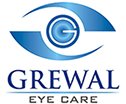What is Age Related Macular Degeneration (AMD)
The retina is the light-sensitive tissue lining the back of the eye. The macula is the part of the retina that is responsible for your central vision, allowing you to see fine details clearly.

Many older people develop macular degeneration as part of the body’s natural aging process. This is called age-related macular degeneration(AMD).
- Symptoms
The symptoms of macular degeneration are blurred vision, dark areas or distortion in central vision, and sometimes, permanent loss of central vision. In AMD peripheral vision is usually not affected. Early symptoms are loss of clarity while reading and distortion of objects. With advanced macular degeneration one may fail to recognize a person’s face. AMD usually affects both eyes, although not necessarily to the same extent.
Types of AMD
- Dry AMD (Atrophic)
With dry macular degeneration, vision loss is usually gradual. These patients need to monitor their central vision regularly. The dry form can change into the more damaging form which is wet (exudative) macular degeneration. While there is no medication or treatment for dry macular degeneration, some people may benefit from vitamin supplements (anti-oxidants).

2.Wet AMD (Exudative)
The occurrence of Wet AMD is quite less as compared to Dry AMD but it can cause more damage to your central vision. Wet macular degeneration occurs when abnormal blood vessels begin to grow in the choroidal layer, underneath the retina. This blood vessel growth is called choroidal neovascularization (CNV). These new blood vessels may leak fluid or blood, blurring or distorting central vision. Vision loss from this form of macular degeneration may be faster and more noticeable than dry AMD.

What your doctor looks for
- Any sign of focal hyper pigmentation of retinal pigment epithelium
- Any development of Drusen
- Any prominent blood vessel in the Atrophic area.
Prevention of AMD
The exact cause of AMD is unknown. A healthy life style without smoking and a good diet may reduce the risk.
Treatment of AMD
There is no treatment for dry AMD, although high dose multivitamin combination has been shown to decrease the risk of visual loss.
There are a few treatment options for wet AMD although the best outcomes occur when this disease is detected early. These include thermal laser, photodynamic therapy, anti-VEGFs or combinations of these. Not all patients may benefit from these, and treatment may not prevent further vision loss.
Other Treatment Modalities
- Trans pupillary thermotherapy(TTT)
- Photodynamic therapy(PDT)
- High speed vitrectomy machine, CONSTELLATION®, with 5000cpm
- Low visual aids and visual rehabilitation
- Ocular genetics & counseling for retinal/macular dystrophies
